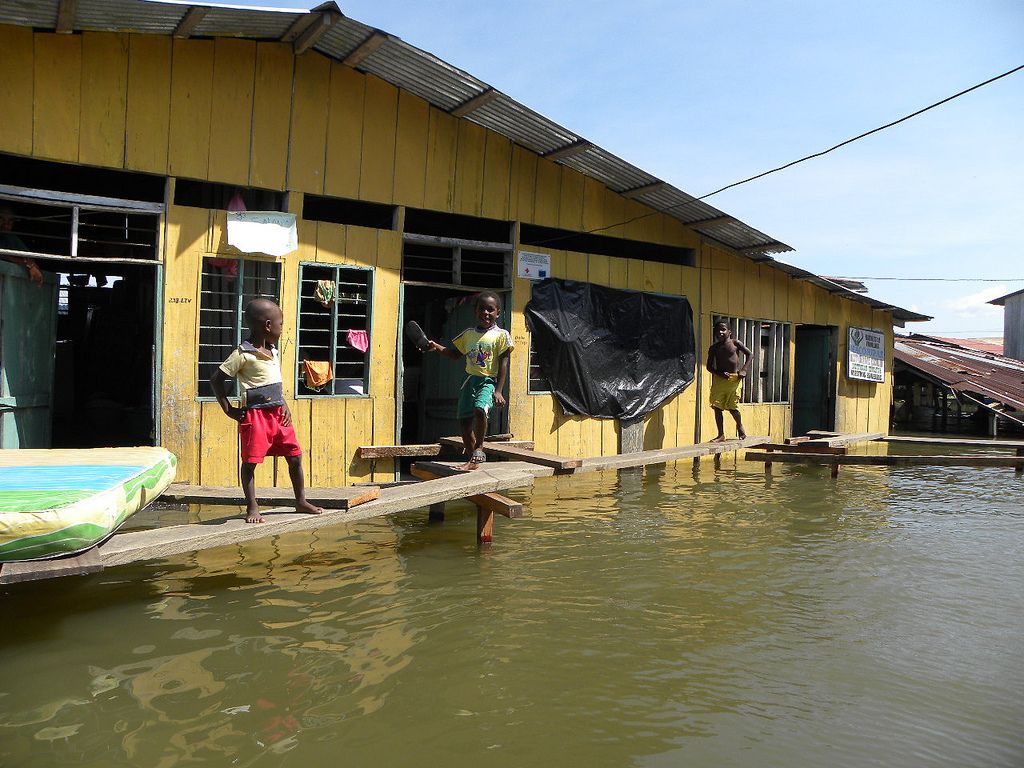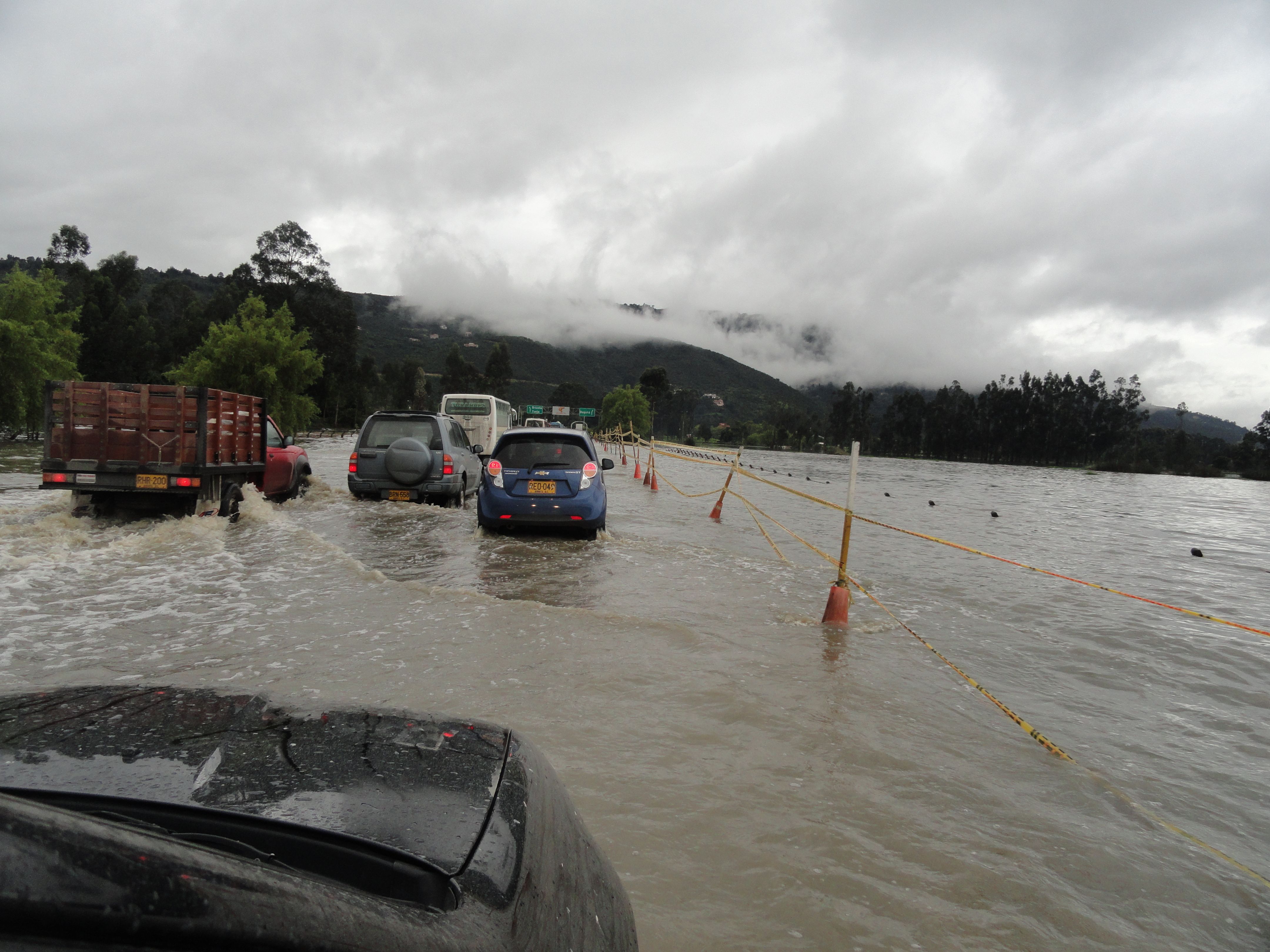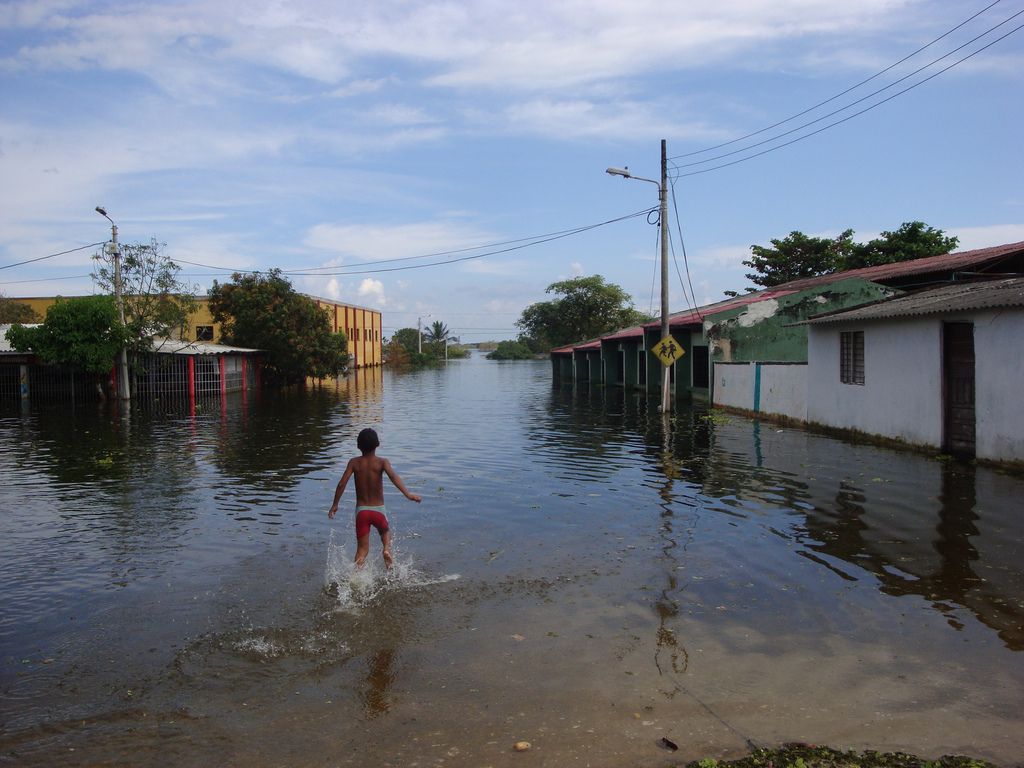For the last nine months, Colombia has gone through one of the most severe rainy seasons in decades. More than a million hectares (2.47 million acres) of productive land have been flooded, roads have been erased by landslides, big and small cities have been isolated and heavily damaged. So far, 428 people have died and 77 are reported missing, according to official figures. About 2.9 million people (6.4 percent of the total population) have been directly affected in 28 of the country’s 32 provinces, according to the National Administrative Department for Statistics.
“This is the worst natural tragedy in the history of the country, considering the number of people affected and the extension of the catastrophe” said President Juan Manuel Santos. “It’s something like when Katrina hit New Orleans a few years ago, but this time we are talking about a whole country.”
The government estimates that this unprecedented rainy season caused by the La Niña/El Niño weather phenomenon could cost some 2.5 percent of the GDP. This is like concentrating in half a year the destructive power of the country’s three most damaging natural disasters of the last 30 years: the earthquake in Armenia in 2001 (1.86 percent of GDP), the volcano eruption in Armero in 1985 (0.29 percent) and the earthquake in Popayan in 1983 (0.45 percent).
Unpredictable forces of nature are in play in Colombia’s current disaster. No one can be blamed for that. But as national and local authorities wash their hands of responsibility, they persist in sponsoring policies and projects that alter (and sometimes destroy) the mechanisms that can both trigger or turn off such forces.
“Deforestation, the destruction of the páramos (high-mountain wetlands) and humedales (savanna wetlands) has profoundly altered the water cycle in our country and has led to the aggravation of floods, which have created favorable conditions for landslides,” wrote Manuel Rodriguez Becerra, former Environment Minister and one of the most vocal critics of how the country is bartering its ecological assets for the short term revenues of environmentally unfriendly industries such as mining.
The current boom in coal and gold mining is threatening the páramos atop the Andes that capture water in the rainy season and act as a natural buffer against floods. This key ecosystem has been disappearing quickly, not only because of pressure from miners who are excavating open-pit mines, but also potato growers, who every day plow in higher altitudes, and ranchers who extend their pasture land. There is no real or effective control from the authorities despite the fact that a law protects these areas.
The same goes for the humedales, a similar system of wetlands, found in moorlands, swamps and mangroves. These also work as water buffers downstream in the extensive and highly productive savannas of the country. Many of the humedales are protected under an international convention signed in 1971. However, the humedales continue to be systematically dried for crops or filled with debris to stabilize the muddy terrain before they are developed for housing projects. Mining has played its part by clogging these wetlands with sediment from the thousands of tons of removed soil.
This time the floods have hit Bogotá, the capital, in an unprecedented way, prompting urban elites to feel more vulnerable in the face of political indolence and harsher weather conditions. The most blatant example is the Torca-Guaymaral area, decades ago a huge and biodiverse wetland north of the city, but today cut in half by a six-lane highway built in the 1950s. The road brought a messy urban growth to the drained patches of this wetland. Fancy country clubs (with fluorescent green golf courses and ponds), sprawling car dealerships, shopping malls, elite high schools, a private university, two cemeteries and a small airport for private aircraft stand where before there was only swamp. Sand and gravel pits thrive in the area, supplying cheap construction material for the still expanding suburban development.
Two weeks ago, many of these facilities had to be evacuated and today they remain half-submerged in the water.
“The rivers are simply claiming back the wetlands where they naturally used to discharge the water excess,” said German Galindo, former environmental head of the city water company and current advisor of La Conejera Foundation, a non-profit organization that protects a portion of the suburban wetlands.
There is no way to prove that the floods would not have occurred if those ecosystem were in good shape. But experts, including Galindo, have no doubt that if these natural buffers where well preserved, the extent of the damages would have been much less. From the 50,000 hectares (123,552 acres) of wetlands that surrounded Bogotá fifty years ago, only 2 percent remain, according to a city accounting office report.
A similar situation affects other parts of the country. Consider La Mojana, a 500,000 hectare (1.2 million acres) savanna in the north of Colombia that is currently flooded. Water has topped levees, inundating crops and houses and drowning thousands of cattle in an area where 70 percent of the population lives in poverty on less than $576 a year, according to a 2005 Central Bank report. But experts point out that the tragedy is caused, in part, by the massive exploitation--both by illegal and legal miners--of gold and platinum in the lower course of the Cauca, Nechí and San Jorge rivers.
The protection of natural water buffers is more urgent in Colombia than probably anywhere else on the continent. Colombia has one of the highest rainfalls in South America with an annual average of 3,000 mm, compared to the 900 mm global average and and 1,600 mm for the rest of Latin America.
However, the government insists on publicizing its receptiveness to mining activities, even though it has acknowledged its poor capacity to enforce environmental standards and regulate this new booming sector.
“Everybody is responsible for the tragedy,” said Galindo. “From the national level to city level, and that includes environmental--but also transportation, housing and mining--authorities.” Investment, especially in oil and mining--two activities that leave a permanent imprint on these ecosystems--is pouring into Colombia, and it is expected to grow now that the country has regained its investment-grade credit rating from Standard & Poor’s and is expecting Fitch and Moody's to follow suit soon. Colombia, the world's fifth-largest exporter of coal, sees production rising over the next four years to 124 million tons a year from 73 million now. Oil is also expected to rise to 1.4 million barrels per day, which would make it Latin America's fourth largest producer.
The cocktail of heavy rains, scarce páramos and invaded wetlands promises to keep causing more tragedies in Colombia. Meanwhile, elected officials promise to build more levees, but show little initiative to curb the problem at the source.
“It’s not that the water is now filling places it is not suppose to,” said Galindo. “It’s that we people have moved where we shouldn’t.”







